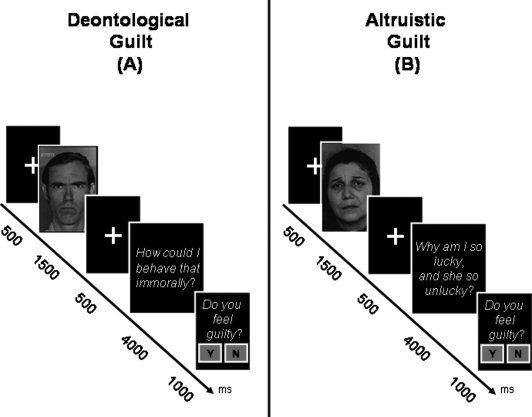Figure 1.

fMRI paradigm. The timing of each event in each trial is illustrated schematically. Each trial included the presentation of an emotional or neutral face, followed by a contextual sentence. The content of the sentence leads to two types of guilt (deontological and altruistic) and two control conditions (anger and sadness). At the end of each trial, subjects were asked to indicate, in a forced yes/no choice, whether they experienced guilt. Two examples are illustrated showing a trial with emotional face plus sentence inducing deontological guilt (A), and a trial with emotional face plus sentence inducing altruistic guilt (B).
